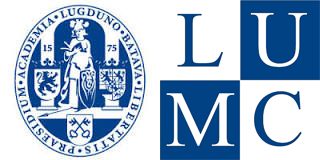nid: 59525
Additional formats:
None available
Description:
Transposition of the great arteries is a congenital (present at birth) heart defect. Because of abnormal development of the fetal heart druing the first 8 weeks of pregnancy, the large vessels that carry blood from hte heart to the lungs, and to the body are improperly connected. Essentially, the connections in the heart are ‘swapped’; in transposition of the great arteries, the aorta is connected to the right ventricle and the pulmonary artery is connected to the left ventricle. Because of this, two separate circuits are formed; one that circulates oxygen-poor blood and one that circulates oxygen-righ blood. The presence of other heart defects allows for some mixing of the circulations; An opening in the atrial or ventricular septum will allow oxygen-rich and oxygen-poor blood to mix. Patent ductus arteriosus (the connection between the aorta and the pulmonary artery) such as in this model also allows for some mixing of blood. Because of this, at least some oxygen is provided to the body.
Anatomical structures in item:
Uploaded by: kmeier
Netherlands, Leiden – Leiden University Medical Center, Leiden University
Cor
Ventriculus sinister
Ventriculus dexter
Atrium dextrum
Atrium sinistrum
Vena cava inferior
Vena cava superior
Truncus pulmonalis
Venae pulmonales
Aorta
Aorta ascendens
Pulmones
Ligamentum arteriosum (Ductus arteriosus)
Creator(s)/credit: Anna Sieben BM, MSc, medical artist and scientific illustrator, UMCG; Monique R.M. Jongbloed MD, PhD, cardiologist, anatomist, LUMC; Ludo de Goeje; Bonnie Schaafsma, Designer; Bert J. Wisse, Senior Research Technician, LUMC
Requirements for usage
You are free to use this item if you follow the requirements of the license:  View license
View license
 View license
View license If you use this item you should credit it as follows:
- For usage in print - copy and paste the line below:
- For digital usage (e.g. in PowerPoint, Impress, Word, Writer) - copy and paste the line below (optionally add the license icon):
"Leiden-Delft-Groningen - 3D model Transposition of the great arteries - open duct - numbered English labels" at AnatomyTOOL.org by Anna Sieben, UMCG, Monique R.M. Jongbloed, LUMC, Ludo de Goeje et al, license: Creative Commons Attribution-NonCommercial-ShareAlike
"Leiden-Delft-Groningen - 3D model Transposition of the great arteries - open duct - numbered English labels" by Anna Sieben, UMCG, Monique R.M. Jongbloed, LUMC, Ludo de Goeje et al, license: CC BY-NC-SA




Comments